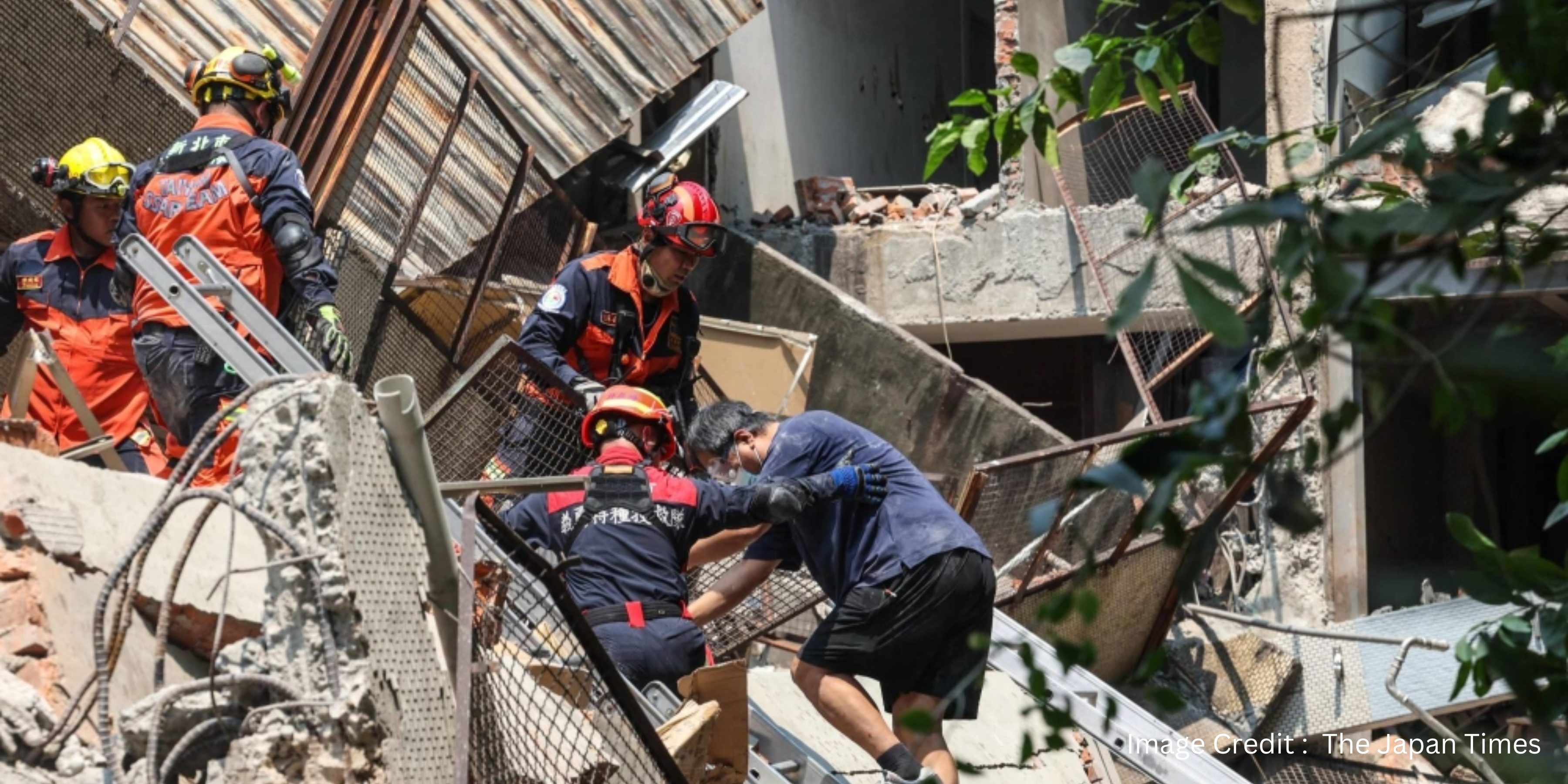Taiwan Central Weather Administration initial evaluations indicate that important energy facilities are online following the 7.2 magnitude earthquake that struck on April 3 and many aftershocks that caused power outages in sections of Taipei, the nation’s capital.

A strong earthquake in Taiwan on Wednesday caused damage to dozens of structures, triggered tsunami warnings that reached Japan and the Philippines before being withdrawn, and left at least seven dead and about seven hundred injured. Three members of a party of seven who were hiking in the surrounding hills early in the morning were crushed to death by rocks that had been dislodged by the earthquake.
A tsunami warning for Okinawa was previously released by the Japan Meteorological Agency (JMA), which also reported on a very shallow 7.5 magnitude earthquake that occurred near Taiwan on April 3 and its associated aftershocks. A 30 centimeter tsunami, according to JMA, made landfall on Yonaguni Island. Later, the tsunami warning for the Philippines, Taiwan, and Japan was raised to an advisory and the warning was dropped to one. However, the JMA advised keeping an eye out for aftershocks with a comparable intensity for around a week.

Six verified LNG vessels were en route to Taiwan terminals, with two going to Taichung and four to Yung An, according to ship tracking data from ICIS LNG Edge. Taipower, a utility, stated on its website that the earthquakes and their aftershocks had no effect on its two nuclear power plants. As of 11:50 a.m. local time on April 3, Taiwan’s Nuclear No. 3 facility is operating regularly, with both of its units operating at a rate of about 99%. This information was provided by state-owned utility Taipower. According to Taipower, there is an ample supply of power and a maximum power supply capacity of 42.63GW at present.
Taiwan Semiconductor Manufacturing Corp. (TSMC), a significant manufacturing business, stated it was initially alright but was examining for any losses. TSMC said in an operational statement that several earthquakes struck Taiwan on the morning of April 3, local time. To protect employee safety, TSMC has put in place safety measures that are functioning normally. Certain factories were evacuated in accordance with corporate protocol, and the company is now verifying the impact’s specifics.

Read More : Moscow Attack : Over 60 Killed at Crocus City Hall in Moscow, ISIS claims responsiblity
One of the deadliest terror attacks ever occurred in Moscow, the capital of Russia on friday night when gunmen opened fire in a music hall, leaving at least 60 people dead and 100 injured. International media outlets have reported that automatic shooting broke out prior to Piknic’s Moscow concert commencing. In order to avoid the bullets, a large number of individuals immediately hurried towards the roof or basement doors or concealed behind chairs in the hallway. The big attack has been attributed to the Islamic State. In the brief message posted on Telegram, the terror group claimed the responsibility for the incident, as reported by the ISIS affiliated news agency Amaq.
Several attackers opened fire on a gathering near Moscow’s Crocus City Hall on Friday. The attackers, who were disguised in their clothing, burst into the premises, started shooting, and hurled an incendiary device or grenade. The OMON anti-riot squad and the SOBR special police forces were dispatched to the Crocus hall, according to the TASS news agency. Following the attack, about 100 people—including members of the rock group Picnic—were evacuated from the basement of a Moscow performance hall building. The Russian foreign ministry posted on Telegram that “this heinous crime must be condemned by the entire world community!” Although the incident was deemed “terrible” by the US administration, there was no apparent evidence linking it to the conflict in Ukraine. Two weeks prior to the incident, the US embassy warned that “extremists” would target large gatherings in Moscow, including concerts.


